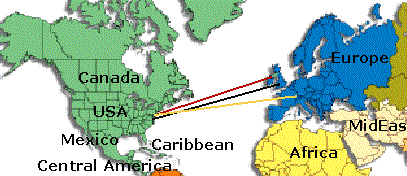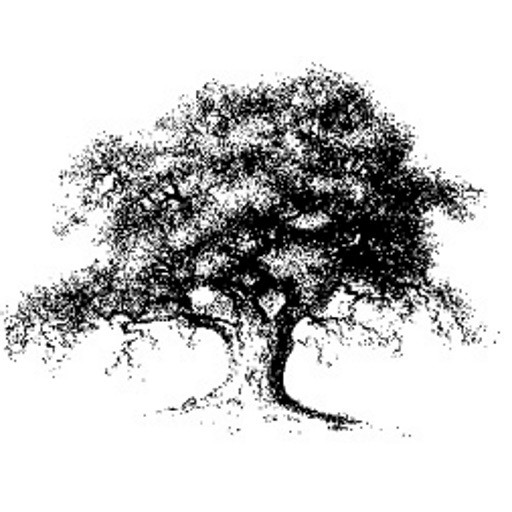Coming to America

My ancestors were of basic European stock. Coming to this country from England, Scotland, Ireland, and Germany. Most arrived here prior to the Revolutionary War with the remainder coming soon after. They came for a multitude of reasons, some to escape persecution, others to escape the feudal systems of Europe. But mainly they came looking for a better life and increased opportunity. They were hard working and industrious, mainly from the then emerging middle class (known as middlin in the British Isles). Listed below are some of our surnames and the places of origin.
![]() My Martin ancestors descended from Scots-Irish stock. They migrated from Scotland in the early 1700’s, remaining there for a couple of generations, then coming to America from Ulster, Northern Ireland. They arrived prior to 1750. Originally settling in Pennsylvania, then migrating to North Carolina.
My Martin ancestors descended from Scots-Irish stock. They migrated from Scotland in the early 1700’s, remaining there for a couple of generations, then coming to America from Ulster, Northern Ireland. They arrived prior to 1750. Originally settling in Pennsylvania, then migrating to North Carolina.
![]() Janet’s Haile ancestors descended from English stock. There is even linkage to British Royalty. They emigrated to the tidewater area of Virginia. Later generations migrated to Tennessee and finally Arkansas.
Janet’s Haile ancestors descended from English stock. There is even linkage to British Royalty. They emigrated to the tidewater area of Virginia. Later generations migrated to Tennessee and finally Arkansas.
![]() The Jackson’s came from England to Virginia. They then moved into eastern Tennessee, then Arkansas and were there prior to the Civil War.
The Jackson’s came from England to Virginia. They then moved into eastern Tennessee, then Arkansas and were there prior to the Civil War.
![]() The Parish name is of English or Irish descend. Although originally Celts from France (Paris) most spread to England and Ireland after being defeated by the Romans. My Parishs probably came the route of most southern English, Virginia to Tennessee, then to Arkansas after the Civil War.
The Parish name is of English or Irish descend. Although originally Celts from France (Paris) most spread to England and Ireland after being defeated by the Romans. My Parishs probably came the route of most southern English, Virginia to Tennessee, then to Arkansas after the Civil War.
![]() The Kever name is of German origin. These ancestors came from Germany during the Palatine Migration. Settling first in western Pennsylvania, then migrating to North Carolina. They followed roughly the same route as the Scots-Irish Martins.
The Kever name is of German origin. These ancestors came from Germany during the Palatine Migration. Settling first in western Pennsylvania, then migrating to North Carolina. They followed roughly the same route as the Scots-Irish Martins.
Both the Scots-Irish emigration and the Palatine German emigration followed roughly the same course. Many of the Germans were assisted in their migration by the British, first coming to Ireland then to America. The most familiar landing spot was Philadelphia. From there they traveled westward across Pennsylvania, through the Susquehanna River Valley, looking for land.
Although they traveled the same route, they seldom traveled or settled together. In some areas one side of the river, or the road, was Scots-Irish and the other was Pennsylvania Dutch. The Dutch (Germans) considered themselves to be more cultured and peace loving that the Scots-Irish. The Dutch got along with their neighbors much better, especially the Native Americans, often taking them as brides. The Scots-Irish on the other hand were much despised by the Indians. They had a notorious reputation as great Indian fighters and were known for giving no quarter.
Both these cultures were forced ever westward and finally southward as each succeeding generation needed land. The migration moved through the Susquehanna River Valley, then southward down the Shenendoah Valley of Virginia into North and South Carolina. The Martins arriving prior to the Revolutionary War, the Kevers shortly after.
There Samuel Martin garnished a reputation as an Indian fighter and Revolutionary War Captain of Militia. All this while raising a family and building a profitable farm.
There also, Jacob Kever took as his bride an American Indian woman (probably Cherokee). The history of North Carolina tells how it was common practice for the Pennsylvania Dutch emigrates to marry with the Native Americans in the area. Photographs of the Kever family clearly show the Native American features. I assume Cherokee since it was the predominant tribe in the area.




